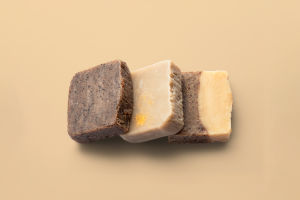The stethoscope is a common medical tool that has become essential in doctors' daily diagnostic routines since its invention in the 19th century.
With the help of a stethoscope, doctors can amplify and analyze internal body sounds, such as the operations of the heart, lungs, and gastrointestinal system, thus aiding in disease diagnosis.
Over time, the stethoscope has undergone various changes in design and function due to technological advancements, yet its core principles and usage methods have retained their traditional characteristics. This article will introduce the stethoscope's history, structure, and modern medical applications.
1. Historical Origins
The invention of the stethoscope traces back to French physician René Laennec. In the early 19th century, Laennec devised the first simple stethoscope to better listen to patients' heart and lung sounds while avoiding the need to place his ear directly on the patient’s chest.
At that time, the stethoscope was merely a rolled-up sheet of paper, through which Laennec could hear heartbeats and breaths. Over time, the design evolved into the soft-tube, binaural stethoscope commonly used today.
In the late 19th century, American physician George P. Cammann improved the stethoscope by designing a binaural model. This design allowed doctors to hear sounds more precisely through both ears, enhancing diagnostic accuracy. Since then, the stethoscope has been widely adopted worldwide, becoming a standard tool for physicians.
2. Basic Structure
Although the stethoscope's design may appear simple, each part has been meticulously crafted. A modern stethoscope typically consists of four main components: earpieces, ear tubes, tubing, and a chest piece.
-Earpieces: These are inserted into the doctor’s ears to block out external noise, allowing the doctor to focus on the internal sounds of the patient’s body. Earpieces are usually made of soft silicone or rubber for comfort and sound isolation.
-Ear Tubes: These metal tubes transmit sound from the chest piece to the doctor’s ears. They are usually made from durable metal.
-Tubing: This is a flexible, soft tube that conveys sound from the chest piece to the ear tubes. It is often made from rubber or plastic materials, providing good elasticity and durability, and allowing doctors to adjust the direction freely during an examination.
-Chest Piece: The chest piece is the most crucial part of the stethoscope, responsible for capturing sounds from the patient’s body. It typically has two sides: the bell and the diaphragm. The bell is used for picking up low-frequency sounds, such as heart murmurs, while the diaphragm is designed for high-frequency sounds like lung or gastrointestinal noises.
3. Modern Developments
With technological advancements, electronic stethoscopes have gradually become an important supplement to traditional stethoscopes. Electronic stethoscopes have built-in microphones and electronic amplifiers that digitize and amplify internal body sounds, helping doctors hear faint heart or lung sounds more clearly.
Moreover, electronic stethoscopes can be connected to computers or smart devices to store, analyze, and even remotely share the collected sound data with other physicians. This opens new possibilities for telemedicine, especially in situations where medical resources are unevenly distributed worldwide. The application of electronic stethoscopes holds great potential.
The stethoscope, as a classic medical tool, has been used in the medical field for nearly two centuries. Despite the continuous advancements in diagnostic technologies, the stethoscope remains vital in doctors' diagnostic processes due to its simplicity, cost-effectiveness, and efficiency. It is foreseeable that, as technology continues to develop, the stethoscope will continue to play an irreplaceable role in the future of medicine.


